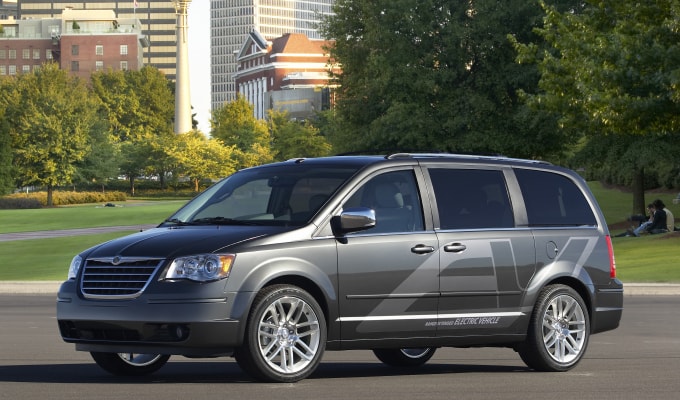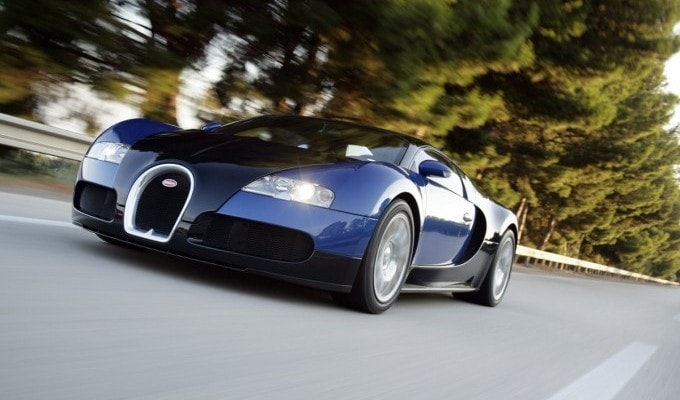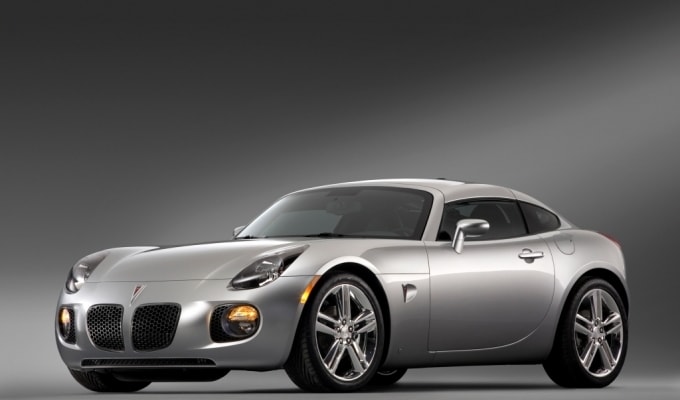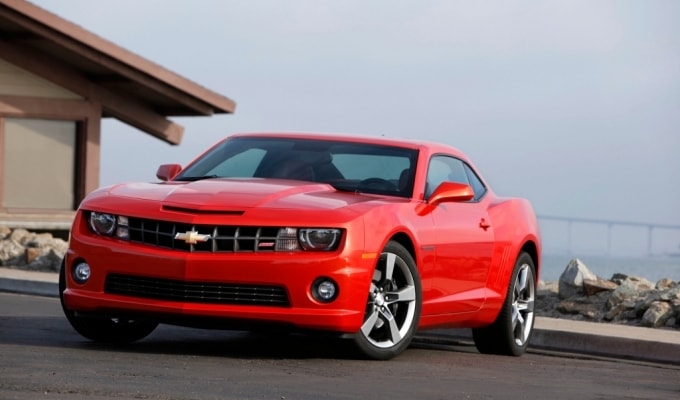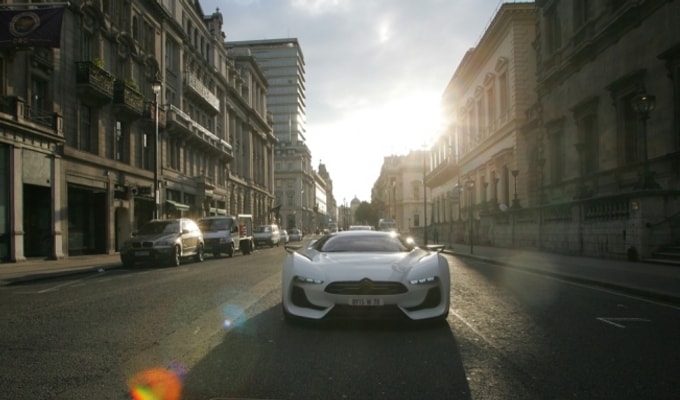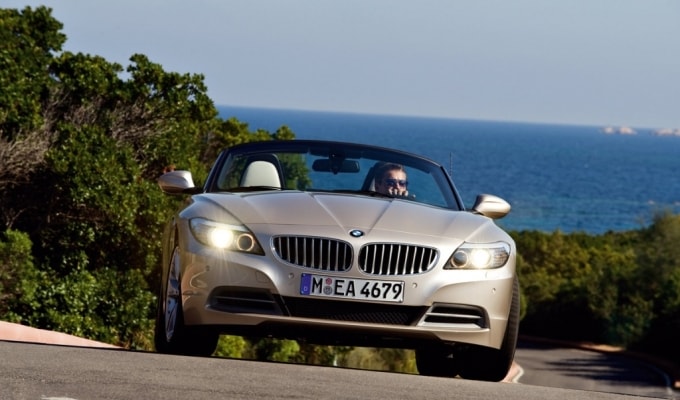2009 has been so far, and chances are it will still be, a very troubled year in the automotive industry. Brought to its knees by an economic crisis which began in an entirely different sector of the economy, the industry is still engulfed in a major shake down, with new entities spawning to replace the former, under-performing ones.
The reasons which led to this do not concern us here. What does concern us is how the future of the automotive industry is shaping up to be, as it will surely be nothing the likes of which we witnessed so far.
As a result of the decaying economical environment, as we said, new entities have been or are on the verge of being created. There are many examples across the world, but we will only be focusing on those which will still have a say, globally.
Fiat-Chrysler - The Italian Cuisine
One of the most interesting developments in the industry is the merger (we will use the term for convenience throughout the story) between Italian manufacturer Fiat and American Detroit Three member Chrysler LLC.
The intentions of the two companies to join forces, announced since January 2009, have become reality this month, as the two companies emerged Chrysler's bankruptcy process as the Chrysler Group LLC.
The new corporate structure is based on those who at one point have been Chrysler's lenders, with outsider Fiat being the lead guitar. According to the agreements signed prior to filing for bankruptcy, the major Chrysler shareholder is a UAW formed Voluntary Employees' Beneficiary Association (VEBA), which controls 55 percent of the new company.
With VEBA lacking the necessary expertise to run the company, that role will be assumed by Fiat, which now holds a 20 percent stake. The Italian manufacturer's equity interest might be increased to up to 35 percent, but only after government funds are repaid.
Minority shareholders are the US government and the Canadian one, which hold 8 and 2 percent, respectively.
The new company will control basically the same brands as it did before, the only difference being the Italian built vehicles which will now enter the US market. Chrysler, Dodge, Jeep, Mopar and Global Electric Motors (GEM) will continue with Chrysler, as no new brand additions are projected. The platforms brought in by Fiat will be used to build Chrysler rebranded vehicles. Fiat will take advantage of the merger to bring to the States the Fiat 500, the only vehicle to wear, for now, the Fiat badge in the US.
Volkswagen-Porsche – War of the Roses
What first began as a love story, with the White Knight (Porsche) stepping in to save the Princess (Volkswagen Group) from the big bad wolves (Daimler, BMW and Renault) has now turned into a messy "War of the Roses" story.
In 2005, Porsche stepped in and acquired a 18.65 stake in the Volkswagen Group to shield it from hostile takeover threats coming from the aforementioned wolves. Gradually, Porsche's stake increased to 30.9 percent (2007) and by another 4.89 percent the following year, reaching the 35.14 percent mark. In January 2009, Porsche raised its stake to 50.76 percent, sending shock waves all the way to Sweden, as it triggered a bid for Scania, until then controlled by Volkswagen.
Today, the two companies are battling the terms under which to form a new automotive conglomerate. The new structure will have ten independent brands, united under one single entity. The issue now is who will in fact be controlling the entity, as both Porsche and Volkswagen want their name in front of the others'.
Porsche/Volkswagen now hold the following subsidiaries in the automotive sector: Porsche, Audi AG, Bentley Motors, Bugatti Automobiles, Lamborghini, Seat, Skoda Auto, Volkswagen Passenger Cars, Volkswagen Commercial Vehicles and Scania AB. No other brand acquisitions are planned for the near future.
GM – Under Construction
GM's story is a bit more complicated than the ones' listed above. Unlike Chrysler, the sheer size the General managed to reach over the years makes it much more difficult for it to lose weight again. Operating under Chapter 11 protection, the American manufacturer is in process of shedding what it calls its bad brands, throwing part of the European automotive industry in disarray in the process.
The company's efforts to get rid on underperforming brands, strongly backed by governments around the world, have begun to pay off.
In Europe, GM got rid of Opel, which is now in advanced talks with Magna, while still flirting with the likes of BAIC or Riplewood. Saab managed to exit GM's umbrella and will remain a Swedish affair, as it will be taken over by Koenigsegg, while US' Army icon Hummer will get packed, bagged and shipped into Chinese hands. Saturn will live on, as it will be taken over by Penske, while the single brand not to survive the crisis remains Pontiac, which will be discontinued later this year.
After exiting bankruptcy, GM will remain, most likely, under government control. The company will now stick with what it considers are its best valued brands: Buick, Cadillac, Chevrolet and GMC. The company's joint ventures will either continue, as is the case in China, or will be terminated, as is the case with NUMMI. No further brands are projected to be added any time soon.
The Lucky Ones
The rest of the automotive players have been somehow sheltered from the struggles of the above mentioned groups. Although fighting to the death the worst sales figures seen in decades, not all the industry has been pulled in the crisis blender.
Ford keeps going as the single American manufacturer not to ask for government bailout. The only unsolved issue it has is the shedding of Swedish based Volvo, for whom a buyer is expected sometimes this year. The American manufacturer will stick with its Ford, Lincoln and Mercury brands, as no axing, slashing or cutting any of them is being considered.
Toyota, the world's no. 1 manufacturer, remains confident it will not have to cut deep to survive the crisis. The Japanese hope that, with the help of their new management, they will get back on track and will not have to resort to any drastic moves.
The French manufacturers are also experiencing difficulties. Still, apart from rumors surfacing some time ago that Fiat is eyeing a merger with PSA Peugeot Citroen, no other major moves are expected on the French front. Renault and its alliance with Nissan lingers on, with various degrees of success with the Zero Emission program, despite huge looses posted by both manufacturers.
Daimler and BMW keep to their businesses, despite the fact that at one point the two German manufacturers intended to swap a 7 percent stake. Fearing that Daimler may attempt a type of takeover by doing the swap, BMW's owners decided to forgo the deal. Still, Daimler and BMW are operating joint purchasing in NAFTA. Recently, Daimler acquired a 10 percent stake in Tesla, a move which will give it access to advanced EV technologies.
Interesting developments are expected to come from China, as the country's crisis defying and ever expanding economy will bring more and more Chinese automakers in markets they were never present in. With over 100 different companies building car locally though, the Chinese will first have to clean up their local industry and only then venture abroad. A fact which seems not to have stopped Tengzhong in taking over Hummer (even if it is a minor investment made by the Chinese - around $100 million), Geely in taking interest in Volvo, or BAIC doing the same with Opel...
The intentions of the two companies to join forces, announced since January 2009, have become reality this month, as the two companies emerged Chrysler's bankruptcy process as the Chrysler Group LLC.
The new corporate structure is based on those who at one point have been Chrysler's lenders, with outsider Fiat being the lead guitar. According to the agreements signed prior to filing for bankruptcy, the major Chrysler shareholder is a UAW formed Voluntary Employees' Beneficiary Association (VEBA), which controls 55 percent of the new company.
With VEBA lacking the necessary expertise to run the company, that role will be assumed by Fiat, which now holds a 20 percent stake. The Italian manufacturer's equity interest might be increased to up to 35 percent, but only after government funds are repaid.
Minority shareholders are the US government and the Canadian one, which hold 8 and 2 percent, respectively.
The new company will control basically the same brands as it did before, the only difference being the Italian built vehicles which will now enter the US market. Chrysler, Dodge, Jeep, Mopar and Global Electric Motors (GEM) will continue with Chrysler, as no new brand additions are projected. The platforms brought in by Fiat will be used to build Chrysler rebranded vehicles. Fiat will take advantage of the merger to bring to the States the Fiat 500, the only vehicle to wear, for now, the Fiat badge in the US.
Volkswagen-Porsche – War of the Roses
What first began as a love story, with the White Knight (Porsche) stepping in to save the Princess (Volkswagen Group) from the big bad wolves (Daimler, BMW and Renault) has now turned into a messy "War of the Roses" story.
In 2005, Porsche stepped in and acquired a 18.65 stake in the Volkswagen Group to shield it from hostile takeover threats coming from the aforementioned wolves. Gradually, Porsche's stake increased to 30.9 percent (2007) and by another 4.89 percent the following year, reaching the 35.14 percent mark. In January 2009, Porsche raised its stake to 50.76 percent, sending shock waves all the way to Sweden, as it triggered a bid for Scania, until then controlled by Volkswagen.
Today, the two companies are battling the terms under which to form a new automotive conglomerate. The new structure will have ten independent brands, united under one single entity. The issue now is who will in fact be controlling the entity, as both Porsche and Volkswagen want their name in front of the others'.
Porsche/Volkswagen now hold the following subsidiaries in the automotive sector: Porsche, Audi AG, Bentley Motors, Bugatti Automobiles, Lamborghini, Seat, Skoda Auto, Volkswagen Passenger Cars, Volkswagen Commercial Vehicles and Scania AB. No other brand acquisitions are planned for the near future.
GM – Under Construction
GM's story is a bit more complicated than the ones' listed above. Unlike Chrysler, the sheer size the General managed to reach over the years makes it much more difficult for it to lose weight again. Operating under Chapter 11 protection, the American manufacturer is in process of shedding what it calls its bad brands, throwing part of the European automotive industry in disarray in the process.
The company's efforts to get rid on underperforming brands, strongly backed by governments around the world, have begun to pay off.
In Europe, GM got rid of Opel, which is now in advanced talks with Magna, while still flirting with the likes of BAIC or Riplewood. Saab managed to exit GM's umbrella and will remain a Swedish affair, as it will be taken over by Koenigsegg, while US' Army icon Hummer will get packed, bagged and shipped into Chinese hands. Saturn will live on, as it will be taken over by Penske, while the single brand not to survive the crisis remains Pontiac, which will be discontinued later this year.
After exiting bankruptcy, GM will remain, most likely, under government control. The company will now stick with what it considers are its best valued brands: Buick, Cadillac, Chevrolet and GMC. The company's joint ventures will either continue, as is the case in China, or will be terminated, as is the case with NUMMI. No further brands are projected to be added any time soon.
The Lucky Ones
The rest of the automotive players have been somehow sheltered from the struggles of the above mentioned groups. Although fighting to the death the worst sales figures seen in decades, not all the industry has been pulled in the crisis blender.
Ford keeps going as the single American manufacturer not to ask for government bailout. The only unsolved issue it has is the shedding of Swedish based Volvo, for whom a buyer is expected sometimes this year. The American manufacturer will stick with its Ford, Lincoln and Mercury brands, as no axing, slashing or cutting any of them is being considered.
Toyota, the world's no. 1 manufacturer, remains confident it will not have to cut deep to survive the crisis. The Japanese hope that, with the help of their new management, they will get back on track and will not have to resort to any drastic moves.
The French manufacturers are also experiencing difficulties. Still, apart from rumors surfacing some time ago that Fiat is eyeing a merger with PSA Peugeot Citroen, no other major moves are expected on the French front. Renault and its alliance with Nissan lingers on, with various degrees of success with the Zero Emission program, despite huge looses posted by both manufacturers.
Daimler and BMW keep to their businesses, despite the fact that at one point the two German manufacturers intended to swap a 7 percent stake. Fearing that Daimler may attempt a type of takeover by doing the swap, BMW's owners decided to forgo the deal. Still, Daimler and BMW are operating joint purchasing in NAFTA. Recently, Daimler acquired a 10 percent stake in Tesla, a move which will give it access to advanced EV technologies.
Interesting developments are expected to come from China, as the country's crisis defying and ever expanding economy will bring more and more Chinese automakers in markets they were never present in. With over 100 different companies building car locally though, the Chinese will first have to clean up their local industry and only then venture abroad. A fact which seems not to have stopped Tengzhong in taking over Hummer (even if it is a minor investment made by the Chinese - around $100 million), Geely in taking interest in Volvo, or BAIC doing the same with Opel...

